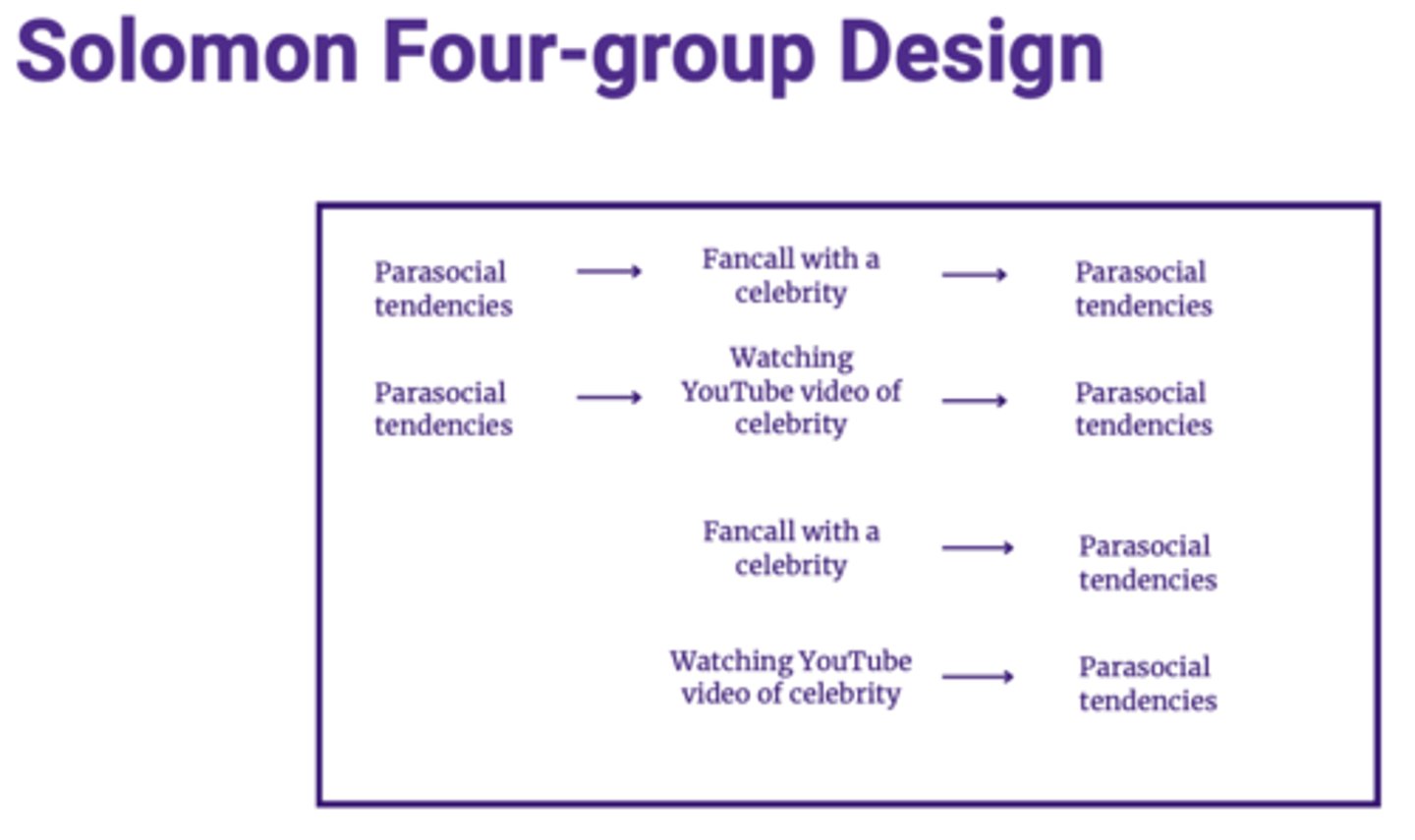EXP PSYCH L2 BASICS OF EXPERIMENTS
1/21
There's no tags or description
Looks like no tags are added yet.
Name | Mastery | Learn | Test | Matching | Spaced |
|---|
No study sessions yet.
22 Terms
true experiment
has 4 elements:
manipulation
control
random selection
random assignment
manipulation
element of environment or the environment itself is purposely changed by experimenter
control
prevent extraneous / nuisance factors from contaminating experimental outcome
random selection
getting small sample from huge population
everyone should have an equal chance of being part of the sample
if population is too small, it becomes the sample itself
ex: fishbowl, roulette
random assignment
happens after participants are selected
participants are assigned in a random way
ex: coin flip
quasi experiments
esembling / resembles experiments but lacks elements to meet criteria for true experiments. thus, not a true experiment
- may lack control due to non random assignment & non manipulated independent variable
- may not include a control group
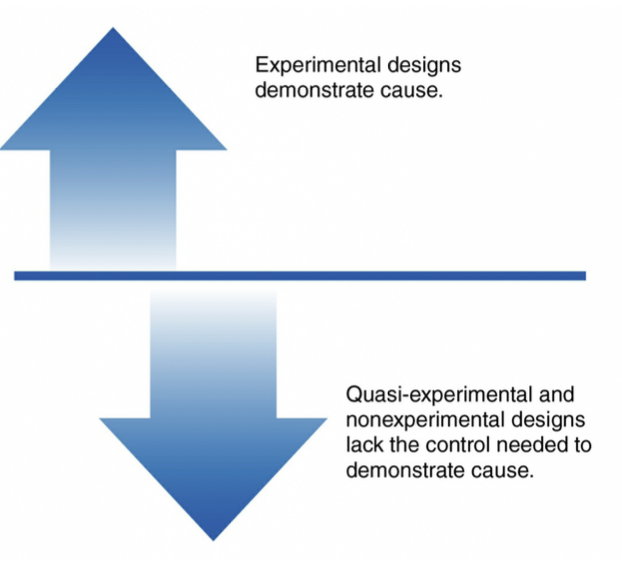
true vs quasi experimental design
true:
cause & effect relationship
offer more control = accurate outcomes / claims
quasi:
lacks control needed to demonstrate cause & effect relationship
types of quasi experiment
one group designs:
post test only
pre test and post test
nonequivalent control group design:
post test only
pre test and post test
time series designs:
basic
interrupted
control

one group post test only
one shot case study / weakest design = lots of flaw
experimenter measures dependent variable for just one group of participants after intervention / treatment
weakness: can't tell if the intervention had effect bcs there's no comparison to how things were before it happened. It only looks at the results afterward.
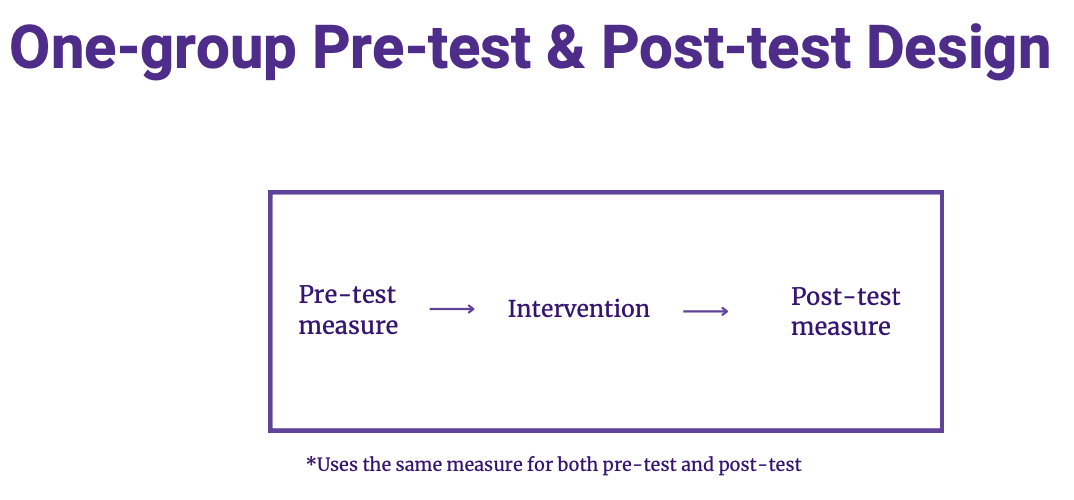
one group pre-test & post test
only one group
measures dependent variable before & after intervention = can compare if intervention has effect
weakness: could cause threats bcs there's no "control group" to compare with
control group
set of participants who does not receive treatment / intervention being studied
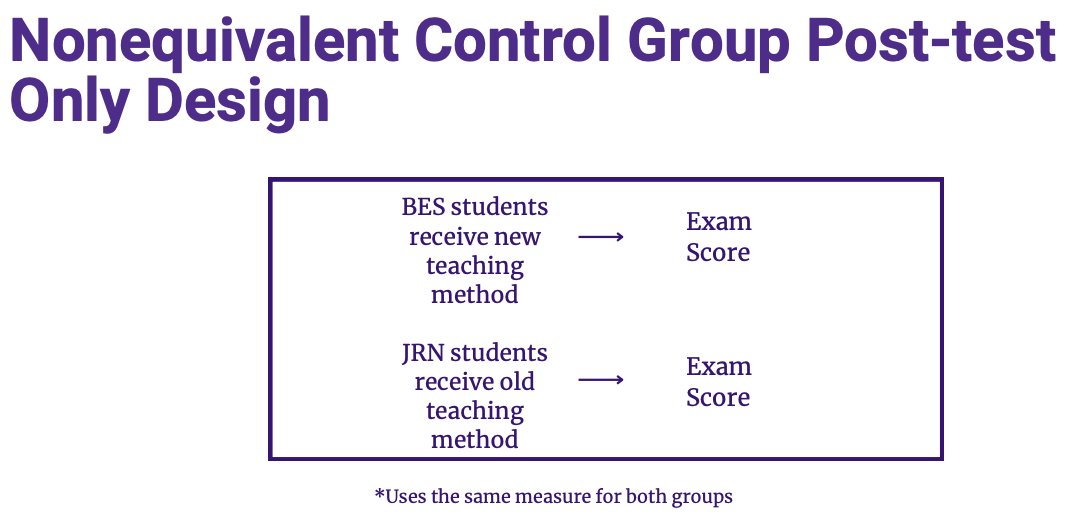
nonequivalent control group post test only
researcher measures dependent variable (results) after treatment in one group & compares it to a nonequivalent control group.
quasi-independent variable: participants are grouped based on their existing characteristics.
weakness: any difference seen in results between groups might be bcs the groups were different to begin with = hard to know if treatment cause change / effect
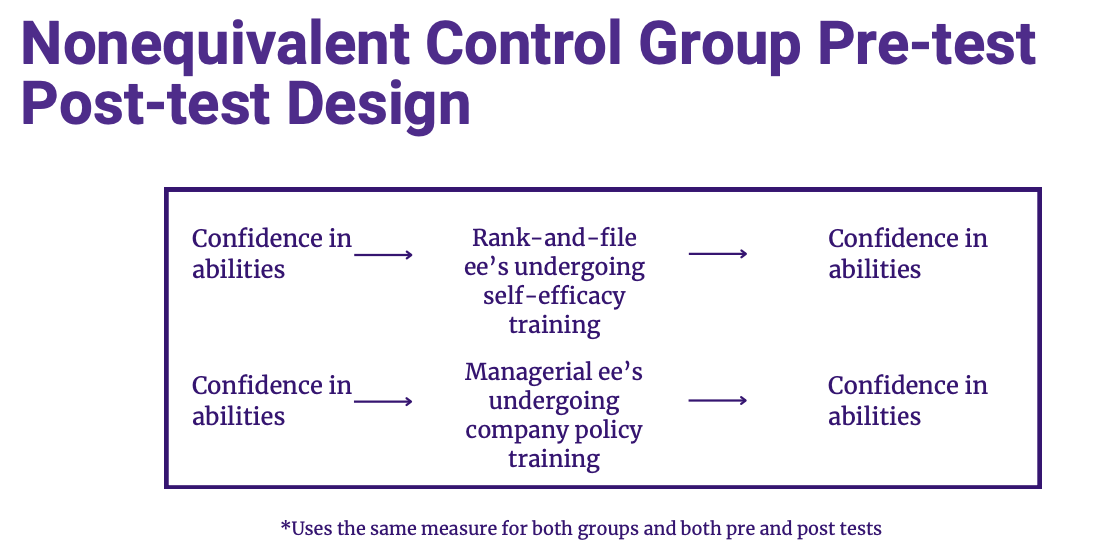
nonequivalent control group pre test and post test
compares pre test & post test results of 2 groups (ppl who received and didn't received intervention) = track changes over time
weakness: no random assignments for participants = pre-existing difference could affect outcome
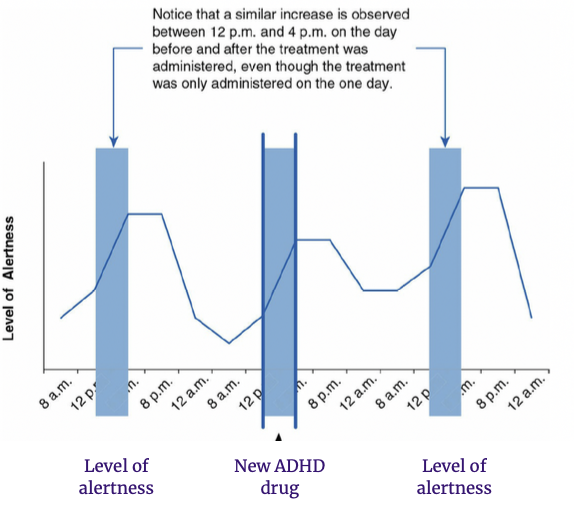
basic time series design
uses series of observations over time, before & after intervention in one group = researcher can see pattern of changes
using time in the study to eliminate problem associated with snapshot of behavior (looking at only one moment)
weakness: won't work well for dependent variables that don't easily change (ex: IQ / personality)
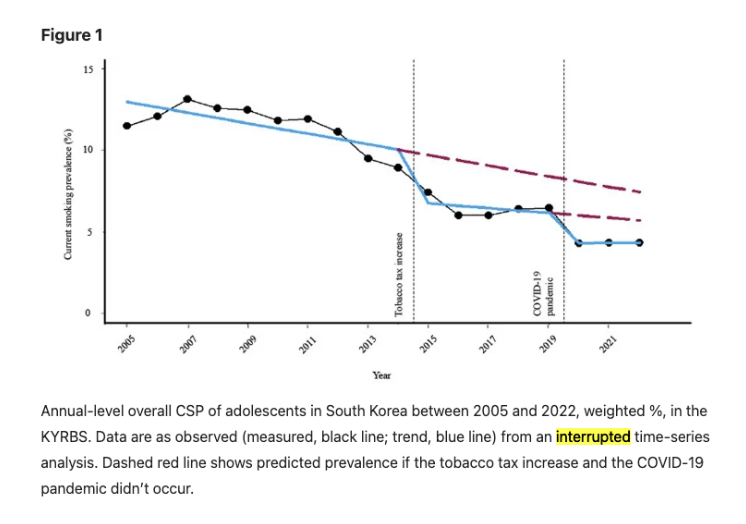
interrupted time series design
measures a dependent variable multiple times before & after a naturally occurring event / intervention (no manipulation)
one group = no control group to compare
goal: focuses on the changes of the same group over time
weakness: limited control / no manipulation
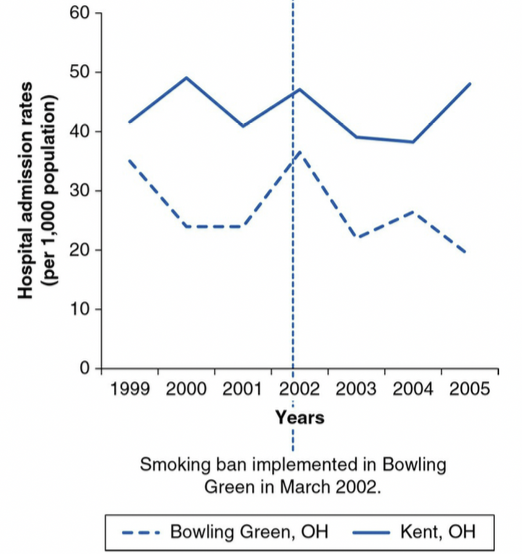
control series design
measures dependent variable multiple times before and after naturally occurring event / intervention (no manipulation)
two non equivalent groups & no random assignment (ppl who received & didn't received intervention)
goal: to compare both groups
weakness: limited control / no manipulation
summary of types of quasi experimental design

types of true experiments
pre test and post test control group design
post test only control group design
solomon four group design
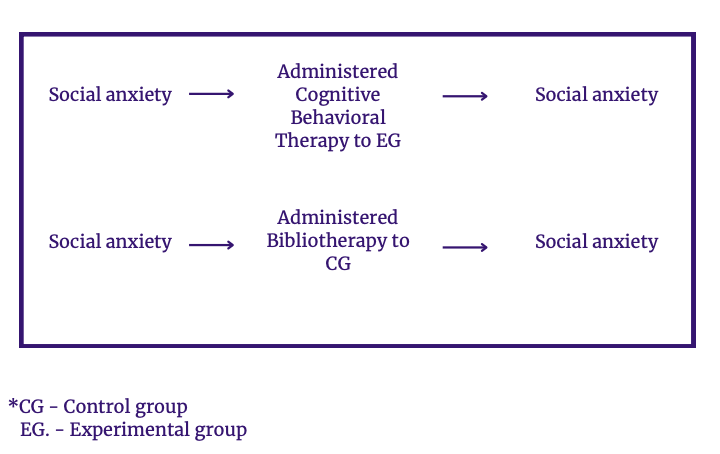
pre test and post test control group design
measures pre test and post test of 2 groups, randomly selected & assigned participants for each group
experimental group = receive tested intervention
control group = different intervention or no intervention given
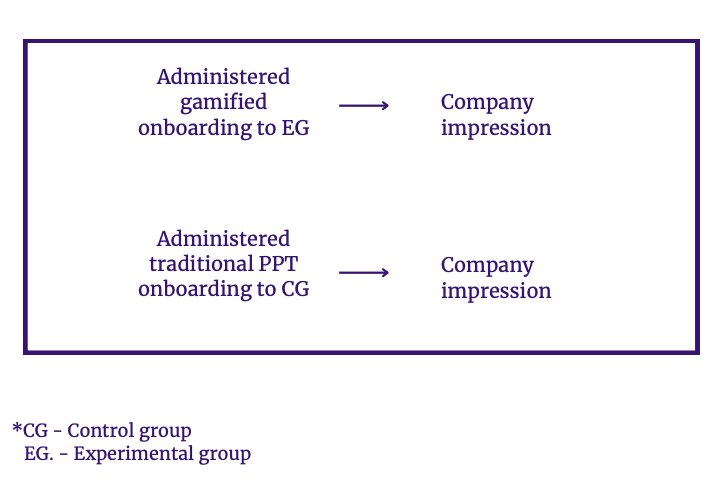
post test only control group design
giving a randomly assigned experimental & control group a post-test after an intervention.
post-test only helps eliminate test effects (recalling / memorizing info) of having both a pre-test and post-test.
basically, post test prevents participants from recalling info from pre-test bcs it could influence their performance in pre test.
helps to focus on just the results after intervention, without worrying about any effects caused by the timing of testing.
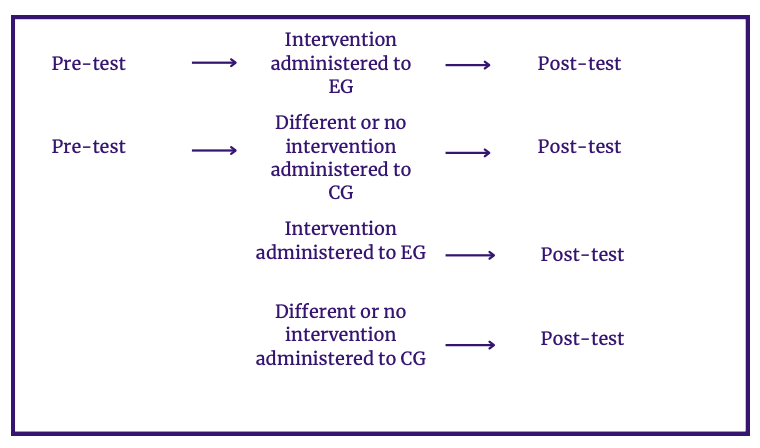
solomon four group design
complex experimental design w/ randomly assigned 2 control and 2 experimental groups
first pair of group: receives both pretest and post test
second pair of groups: receives only post test
in simple terms, SFGD combines the 2 previous design
helps address better timing and prevent pre test memories from influencing results
SFGD example
